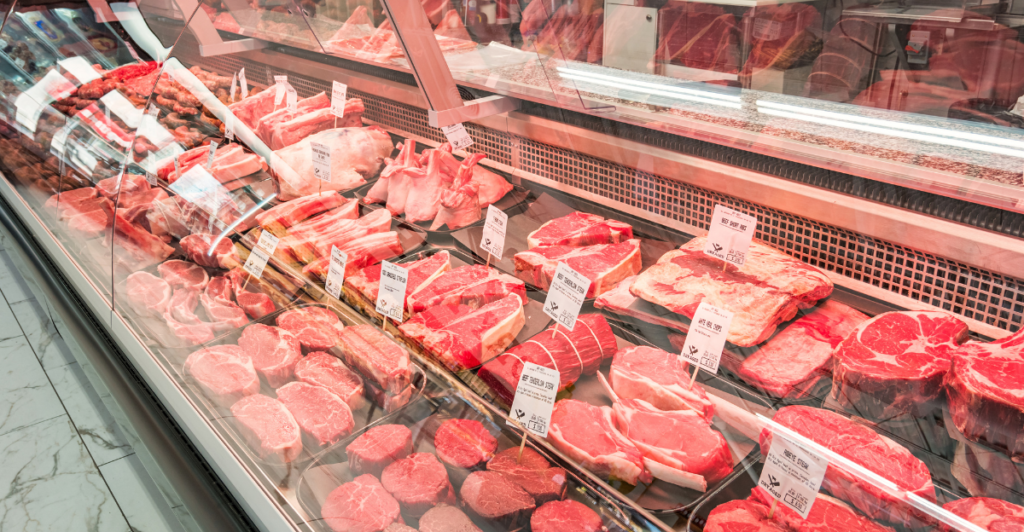
The grocery landscape is experiencing significant changes, with potential shortages or the outright disappearance of some popular items from area stores. Factors such as climate change, supply chain disruptions, and shifts in consumer preferences are contributing to the challenges.
Consumers aware of these trends can prepare themselves for the evolving grocery market. In this article, we take a look at seven of the most popular grocery store foods that are disappearing fast, examining the reasons behind the scarcity and offering insights into how consumers can respond.
1. Orange Juice

Orange juice, a staple in many households, is facing significant threats due to citrus greening disease and unpredictable weather patterns. Spread by insects, this bacterial infection has decimated orange groves throughout the United States, resulting in lower yields and higher production costs.
As a result, consumers may find fewer cartons of orange juice on store shelves, and prices are likely to increase. To make matters worse, experts say that they are trying to develop disease-resistant orange trees, but progress is slow, potentially turning orange juice into a luxury item.
2. Canned Tuna

Canned tuna, one of the most common pantry staples, is under threat due to overfishing and sustainability issues. To satisfy global demand, tuna populations, particularly bluefin tuna, have been overexploited, leading to demands for stricter fishing regulations.
In response, some brands are introducing smaller portions or replacing fish with alternatives like mackerel or sardines. Plant-based and lab-grown tuna substitutes are also rising in popularity, but they come with a higher price tag. If overfishing persists, canned tuna could disappear from supermarket shelves.
3. Peanut Butter

Peanut butter fans will also have a tougher time finding their favorite spread due to climate change and crop challenges. Unpredictable weather has reduced peanut production in key growing states like Georgia and Alabama.
Additionally, increasing numbers of peanut allergies have caused some farmers to turn to alternative crops. With supplies tightening and prices climbing, manufacturers are having trouble keeping up with demand.
Alternative spreads, such as almond or sunflower seed butter, are also available but generally pricier. Efforts to develop more resilient peanut varieties are ongoing, but until they are widely adopted, the peanut butter market remains vulnerable.
4. Packaged Salad Greens

Severe droughts in California, a major supplier of leafy greens, are threatening the availability of packaged salads. Water shortages have led farmers to focus on higher-value crops such as almonds, leaving fewer resources and less land for lettuce and spinach.
Rising labor and transportation costs have pushed production costs higher, leading to fewer options and higher prices for consumers.
Pandemic-related supply chain disruptions have also made it especially difficult to consistently stock fresh salads. As supplies dwindle, consumers are turning to local farmers’ markets or growing their greens at home.
5. Coffee Beans

The future looks bleak for coffee lovers as climate change, pests, and diseases like coffee leaf rust threaten coffee crops. Arabica beans, known for their smooth flavor, are especially sensitive to increasing temperatures and shifting rainfall patterns.
Production in major coffee-producing countries such as Brazil and Ethiopia is declining, resulting in supply shortfalls and higher costs. Some farmers are experimenting with harder coffee varieties, but it often comes at the expense of quality and taste.
Combine supply chain disruptions and labor shortages with the rising price of coffee, and you have a potential luxury item for many households.
6. Berries

Berries, including strawberries, blueberries, and raspberries, are becoming increasingly difficult to find due to climate change and supply chain issues. Shifts in weather patterns disrupt berry production, and unpredictable temperatures can harm crops.
Transportation challenges, such as delays or disruptions in the transport network, mean fewer berries arrive in stores when needed. Consequently, consumers should brace themselves for fluctuations in berry availability during their grocery trips.
7. Almonds

Almonds, known for being water-intensive, are facing challenges due to expensive water costs and droughts. These factors could also limit the number of almonds on store shelves, driving up prices or decreasing the supply with time.
As water scarcity becomes a bigger issue, almond farmers are under pressure to adapt. As almonds become less common in grocery stores, consumers may need to explore alternatives for their nutty cravings.
8. Bananas

Bananas are under pressure from climate change, which disrupts production in banana-growing areas. Extreme weather can damage crops, resulting in a scarcity of bananas.
Additionally, banana plants’ lack of genetic diversity makes them vulnerable to disease, which could affect their supply. This scenario could result in empty banana bins at local shops, making bananas less of a staple in many kitchens.
9. Toilet Paper

Toilet paper, an essential household item, is experiencing renewed shortages due to supply chain disruptions and increasing demand. This issue is reminiscent of the shortages experienced during the pandemic.
Certain areas are experiencing reduced availability, so consumers are advised to stock up to avoid inconvenience. Factors contributing to these shortages include logistical challenges and heightened consumer demand.
10. Beef Products

The beef industry is facing multiple challenges, including rising feed costs, water shortages, and environmental concerns over methane emissions. Many supermarket chains are reducing beef stock, instead opting for plant-based alternatives or lab-grown meats.
This shift is driven by consumer demand and the unsustainability of conventional cattle ranching. Beef shortages and inflation have driven up prices, making steak and hamburgers a luxury for many families. While a plant-based alternative is growing,it has yet to fully replicate the taste and texture of real beef.
11. Potato Chips

Snack foods like potato chips are facing challenges due to a combination of climate change and crop diseases such as late blight. This fungus thrives in warm, wet conditions and has led to widespread crop failures in major potato-growing regions across the country.
Extreme weather events have worsened these problems, resulting in smaller, less reliable harvests for farmers. Popular chip brands are responding by reducing bag sizes or increasing prices. Some companies are even experimenting with alternative starches to create new snacks, potentially altering the classic potato chip market.
12. Avocados

Avocados, often referred to as “green gold” are facing a precarious future due to water scarcity and high environmental costs associated with their farming. These fruits require a lot of water — as much as 70 gallons per avocado in some regions.
Severe droughts in Mexico and California, along with increasing transportation costs, are pushing up prices. Export restrictions and supply chain disruptions have only added to the problem, with consumers struggling to find avocados at a reasonable price. As the price of avocados skyrockets, some devotees will perhaps have to seek substitutes, such as hummus or other vegetable spreads.
